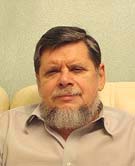Contents: 2024 | 2023 | 2022 | 2021 | 2020 | 2019 | 2018 | 2017 | 2016 | 2015 | 2014 | 2013 | 2012 | 2011 | 2010 | 2009 | 2008 | 2007 | 2006 | 2005 | 2004 | 2003 | 2002 | 2001
2015, 1
Acoustics of Hazrati Imam Mosque in Tashkent
language: Russian
received 26.01.2015, published 16.02.2015
Download article (PDF, 655 kb, ZIP), use browser command "Save Target As..."
To read this document you need Adobe Acrobat © Reader software, which is simple to use and available at no cost. Use version 4.0 or higher. You can download software from Adobe site (http://www.adobe.com/).
ABSTRACT
Hazrati Imam Mosque was built in 2007. It is a part of a well-known architectural and historical area in Tashkent. The mosque has the volume V=25100 m3 and may include up to 4000 people. Acoustic measurements (RT, EDT, C50, STI, etc.) were done in the empty mosque according to ISO 3382-1. The results of the measurements lead to the conclusion of not a proper speech intelligibility in the mosque. In the most area of the floor STI=0.42-0.46. The large reverberation time (RTunocc~3.5 s and RTocc~2.8 s at the middle frequencies) is the main reason for the small values of STI. Two possibilities to enlarge the speech intelligibility have been discussed. They deal with the placement of sound absorbing materials in the flat ceiling of the mosque and the reconstruction of the existing system of sound reinforcement.
Key words: architectural acoustics, mosque, speech intelligibility, acoustic measurements.
9 pages, 10 figures
Сitation: M. Lannie, G. Lokshin. Acoustics of Hazrati Imam Mosque in Tashkent. Electronic Journal “Technical Acoustics”, http://www.ejta.org, 2015, 1.
REFERENCES
1. ISO 3382-1:2009. Acoustics. Measurement of room acoustic parameters. Part 1: Performance spaces (ГОСТ Р ИСО 3382-1-2013).
2. W. Ahnert, S. Feistel, T. Behrens. Speech intelligibility prediction in very large sacral venues //Architectural Acoustics Session 4pAAa. ICA 2013 Montreal, Canada, 2 7 June 2013.
 |
Michael Lannie graduated from the Moscow Institute of Telecommunications in 1972. Since that time he has been employed in the Research Institute TV and Radio, Moscow, as head of the acoustic laboratory. At that period his main job dealt with acoustic design of television and radio studios. He received a Ph.D. for research on a new method for measuring room acoustics. Recently he has been working as head of the architectural acoustics laboratory in ARIS-PRO company. He also participates in the scientific and design researches in the acoustic laboratories of the Moscow Research and Design Institute for Culture, Leisure, Sports, and Public Health Constructions and the Research Institute of Building Physics (Moscow). He is the designer of acoustic solutions of many studios and public halls built in Russia and the author of more than 100 papers on architectural acoustics, noise control and sound reinforcement. Dr. Lannie is a member of the Russian Acoustic Society, AES and ASA. In addition, he is the vice-chairman of the AES Moscow section and is responsible for the section activity in room acoustics and sound reinforcement. mlannie(at)mail.ru |
|
 |
Gennady Lokshin graduated from the Moscow College of Theater and Art (THK №60) in 2012 with a certificate of degree in sound engineering. Since 2012 he has been employed in the laboratory of architectural acoustics of ARIS company. At the present time he is engaged in the design of architectural drawings, acoustic computer models and acoustical measurements. meyer24(at)yandex.ru |
|
